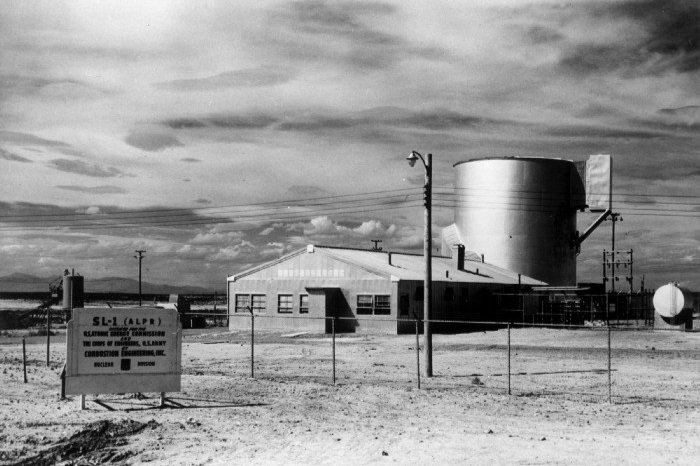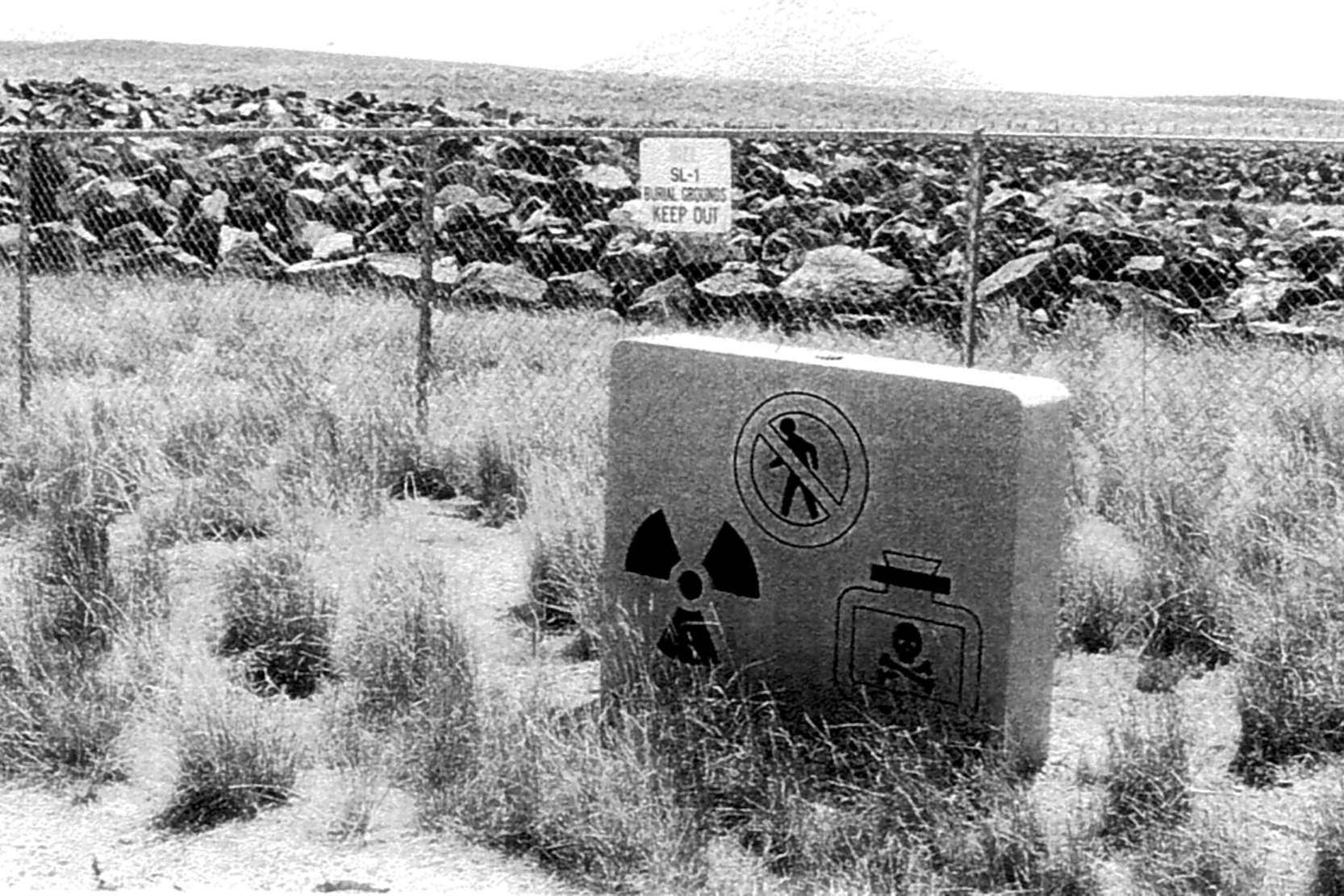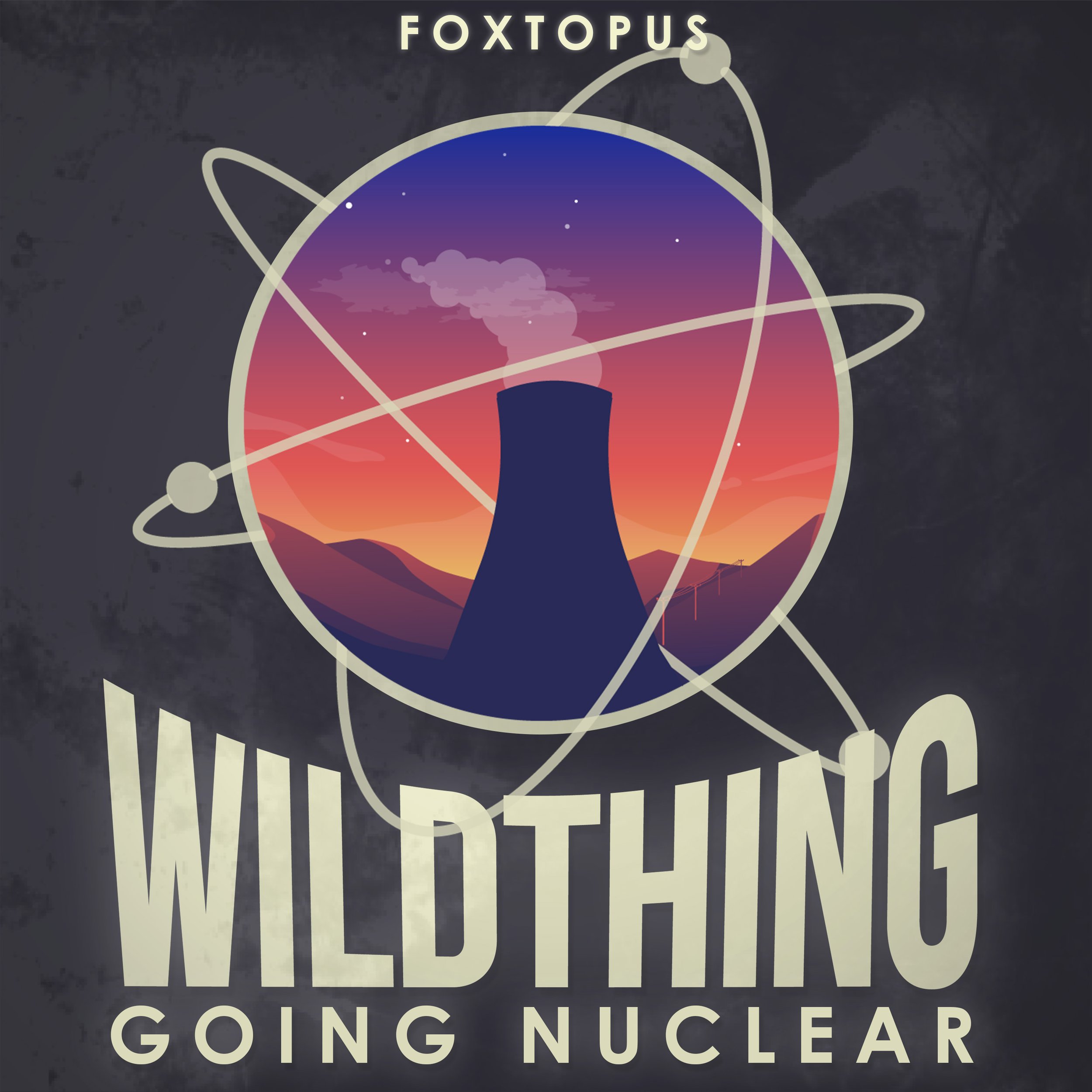WILD THING: GOING NUCLEAR
Season 3: The History, Science and Culture of Atomic Energy
You’d be forgiven if you’ve never heard the story of the meltdown of the SL-1 nuclear reactor at a federal research facility in Idaho. Rumors about love triangles, emotional instability and insubordination made the rounds but what actually happened that night remains a mystery. All we know is that an explosion killed three men, contaminated and sickened rescue personnel, and then exposed thousands of citizens in the nearby towns to a cloud of radioactive gasses.
All this took place in the rugged high desert of Idaho, just forty-five minutes outside host Laura Krantz’s hometown of Idaho Falls. Now, sixty years later, her same town is on the brink of becoming the latest test case for nuclear energy. In Wild Thing: Going Nuclear, we’ll use science, history and culture to probe the realities of atomic energy today, while analyzing our own fascination— and ambivalence—with all things atomic. What are the true risks? And what is the actual potential? Are we better at this than we were sixty years ago? And given our nature, this podcast about nuclear energy will ask if we humans are even responsible enough to harness the power of the universe—and whether we should?
“In a matter of seconds, a quiet, cold January night became radioactively hot. It forced us to reconsider our plans for an atomic future and reckon with some questions we might have preferred to ignore.”
Praise for Wild Thing’s Nuclear Podcast
America’s Complicated Relationship with Nuclear Power - Vice
Hitting the road this summer? Here are 12 gripping podcasts to take with you - Boston Globe
“Wild Thing: Going Nuclear” - 1.5x Speed, Vulture
Your ears will perk up at these new Western podcasts - High Country News
Wild Thing: Can nuclear energy solve climate change? - Press Play, KCRW
Laura Krantz Simplifies Science in Wild Thing: Going Nuclear - Westword
New podcast traces the history, controversy and promise of nuclear power - Colorado Matters, Colorado Public Radio
Idaho Falls’ nuclear history - Idaho Matters, Boise Public Radio



Episodes
Episode 1:
Close To Home
Two dead men. One man missing. A hole blown in the side of the reactor. A cloud of radioactive gas so hot, it was off the charts. What happened with the SL-1 reactor feeds into our deep fear about the dangers of nuclear energy. But we remain intrigued by the possibilities of an atomic future, especially at a time when we need clean energy more than ever. Are the risks worth the rewards? And have we learned from past mistakes?
Episode 2:
Out Of Little Things
How did we figure out that such a tiny particle—an atom—held all that power? For that matter, what is an atom? A primer on the basics of atomic energy—including its destructive capabilities—to help us better understand the events that unfolded roughly 20 years later at SL-1. We’ll get a (basic!) lesson in nuclear physics from scientists, and explore some of the history that brought atomic power to the Idaho desert.
*Recommended reading:
The Making of the Atomic Bomb by Richard Rhodes
Episode 3:
A New(clear) Hope
The horrifying devastation of Hiroshima and Nagasaki proved the destructive capabilities of nuclear power. But, in the aftermath of World War II, we started to experiment with how we could use atomic energy for good. It was the dawn of a new era in science, and, in that spirit, thousands of men arrived in Idaho, including the men whose deaths would later signify the difficulty of achieving this atomic America.
*Recommended reading:
Atomic Americans: Citizens in a Nuclear State by Sarah Robey
Episode 4:
Chain Reaction
Two of the men working the reactor that night had personal problems. They hated each other. They fought with their bosses. And those problems could easily distract a man from his work—but what does that mean when you’re working with nuclear materials? At a reactor that, although managed by the military, seemed to be falling apart due to infrastructure issues, mechanical failures, and lackluster maintenance?
*Recommended reading:
Atomic America by Todd Tucker
Episode 5:
Trust Issues
The only three people who really knew what had happened at SL-1 were dead, and it would take months to determine what likely happened—plenty of time for rumors and gossip to take hold. Was there a love triangle? A fight gone wrong? A murder suicide? A government cover-up? Or was all of this rumor and innuendo simply a distraction from the real problems? And, ultimately, what information could people trust?
Episode 6:
You Look Radiant
As firefighters and medical personnel staged operations at SL-1, a plume of radioactive gas silently made its way over the Idaho desert, creeping towards the nearby towns. How much of a risk did the explosion at SL-1 actually pose? And what does radiation actually do to the human body? We are constantly bathing in what’s called background radiation—so where is the line? How much is safe and how much is too much?
*Recommended reading:
Strange Glow: The Story of Radiation by Timothy Jorgensen
Episode 7:
Half-Life
The aftermath of SL-1 highlighted a problem that we still haven’t solved, despite decades of searching for a solution: what to do with the waste. Our plans to store nuclear waste inside Yucca Mountain in Nevada fell through. So now what? Can we safely contain these materials? Should the waste be in one location, or many? How do we warn future generations about the dangers these materials pose?
Episode 8:
Risky Business
Incidents like Chernobyl and Fukushima are often what comes to mind when we think about nuclear energy. Thankfully, events like these actually very rare. So does that mean the risks we associate with atomic power are as bad as we think? How good are we at actually assessing those risks? And can we make things even less risky by removing humans from the equation? That’s how some next generation projects hope to make nuclear energy safer.
*Recommended reading:
Radiation Nation by Natasha Zaretsky
Episode 9:
An Atomic Future
What were the long-term effects of the SL-1 explosion? Nuclear power is a shrinking part of America’s energy picture; accidents and fear have tarnished it, and the old reactor fleet is reaching its end. Yet nuclear energy could provide a bulwark against the looming threat of climate change. Is it something we can make work for us, in spite of ourselves? Are the costs worth it in the long run? Sixty years on, what do we know—and are we better prepared?
This season of Wild Thing is made possible through generous support from First Light Capital Group.
Founded by female entrepreneur Alba Tull, First Light Capital Group is an innovative investment firm that strives to generate outstanding financial returns and change how the industry fosters talent and diversity.
First Light has a dual-pronged mission. First, it trades public equities, private equities and debt using its proprietary data-informed investment process. And second, through a separate seed fund, it seeks to cultivate the next generation of female entrepreneurs by providing women-led businesses in the technology and biotechnology sectors with the capital, infrastructure support and mentorship needed to take their companies to the next level.



